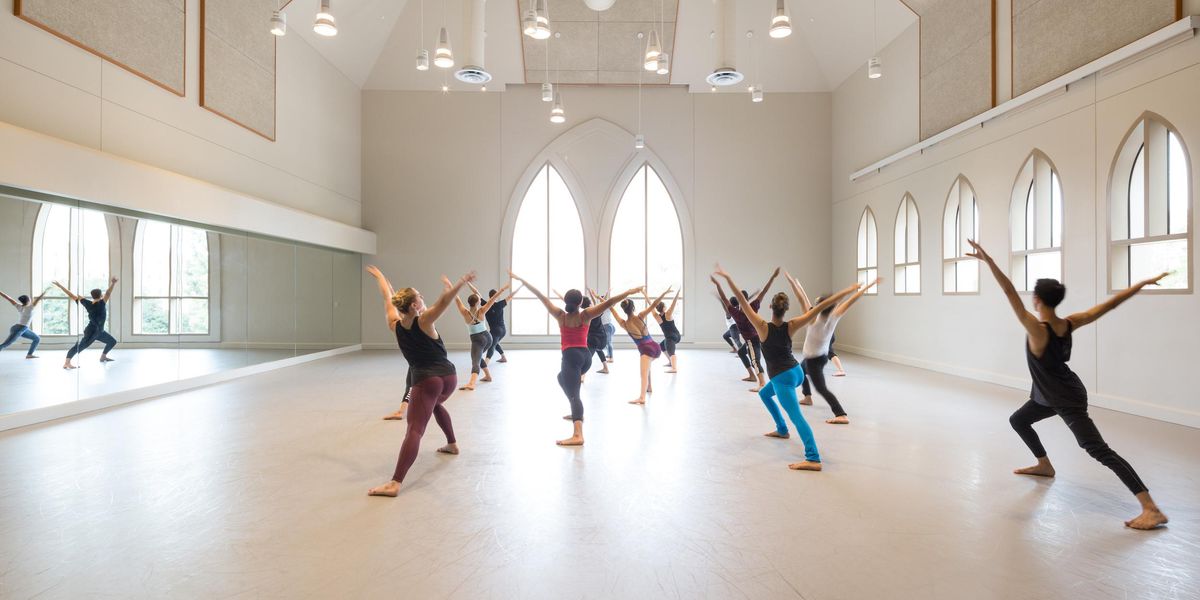Attitudes
We seem to be in the middle of a serious debate on whether New York is (or is still) the center of the dance world. Wow! Big stuff! Big argument! But, as first pointed out in these pages by editor Wendy Perron (“Curtain Up,” December 2005), in these days of globalization, one wonders whether such a proposition means very much and whether it’s readily demonstrable. New York, or rather the United States (as a London import of more than 40 years standing, I have always noticed that we New Yorkers tend to confuse the two), can with some justification claim to have invented modern dance and, more definitively, postmodern dance.
Early in the 20th century the influence of Isadora Duncan was one of the crucial elements in the development of theatrical dancing. It was not so much her dancing or choreography that eventually proved so significant—even if its influence on the likes of Michel Fokine, the Russian choreographic trailblazer, is not to be sniffed at—but more the force of her personality and, most of all, simply the impact of her example. True, not many dancers embraced a Greek revival or ran around in artfully swirling, near-transparent draperies. Despite her many pupils and disciples, she was essentially one of a kind. She still demonstrated that there could be new ways to dance apart from classical ballet or folk dance, and she also extended the range of music suitable for choreographic expression, using even a Beethoven symphony. Dance was never the same after Isadora.
Among the Europeans themselves, the French music teacher François Delsarte had started his explorations into body movement (even before Isadora erupted on the scene), extended by the Swiss Émile Jaques-Dalcroze. The seminal Hungarian Rudolf von Laban taught Kurt Jooss and Mary Wigman, the latter also studying under Jaques-Dalcroze. Modern dance soon found fruitful soil in German expressionism before it was decreed decadent by the Nazis. But it was in the United States that modern dance put down its lasting roots, with Ted Shawn and Ruth St. Denis and their Denishawn Studio encouraging such dancers as Martha Graham and Doris Humphrey, plus, it should be noted, an assist from an immigrant pupil of Wigman, Hanya Holm.
By 1950 no one could dispute the supremacy of America in the field of modern dance. This supremacy was based on the Graham/Humphrey axis, but also on the major influence of Holm and, around this time, the West Coast school of Lester Horton. During the 1960s the avant-garde activities of the Judson Dance Theater in Greenwich Village gave birth to what came be known as postmodern dance. Now added to all this was the growing prestige of American classical dance, led by George Balanchine, founder in 1933 of the School of American Ballet. Slowly his company, New York City Ballet, became recognized as the most creative classical company in the world. Taken in conjunction with the sometimes fluctuating fortunes of the other New York-based classical company, American Ballet Theatre, New York was virtually at the top of the world scene in classical ballet in addition to its unquestioned position in modern and postmodern dance.
So what happened? Is New York still indisputably king of the hill? Put briefly, no. The center of any art form moves around from country to country, capital to capital. Not long ago New York, apart from dance, also had bragging rights in the visual arts. Again, no longer. As I implied at the opening, globalization, helped by the web, has ironed out many national distinctions.
Dance as an art form is nowhere in the world at the peak of popularity it achieved in the 1970s. The creative center in classical ballet is at present in limbo. While technique has risen, creativity has slipped. Where, today, are the likes of Balanchine, Ashton, Robbins, and Tudor? Ballet is almost in the holding position of today’s opera. The United States is doing as well as anyone and better than most. New York is still the only city to have two major ballet companies, and across the nation there are more classical companies than in any other country.
In modern dance and its offshoots, possibly Europe at the moment is more creative, more with the pulse of things. Certainly in France, comparatively massive state subsidies help, especially in helping the adventurous. Our dance—classical and modern—goes cap in hand to patrons and sponsors, with creativity usually playing second fiddle to fund-raising. Even so, I suggest that New York is home to more modern dance companies and schools than any other city on our deflated globe, while no European troupe enjoys the universal prestige of a Merce Cunningham or Paul Taylor company.
So are we still dance’s No. 1? If we are not, we can always say: Been there, done that!
Senior Consulting Editor Clive Barnes also covers dance and theater for the
New York Post.




